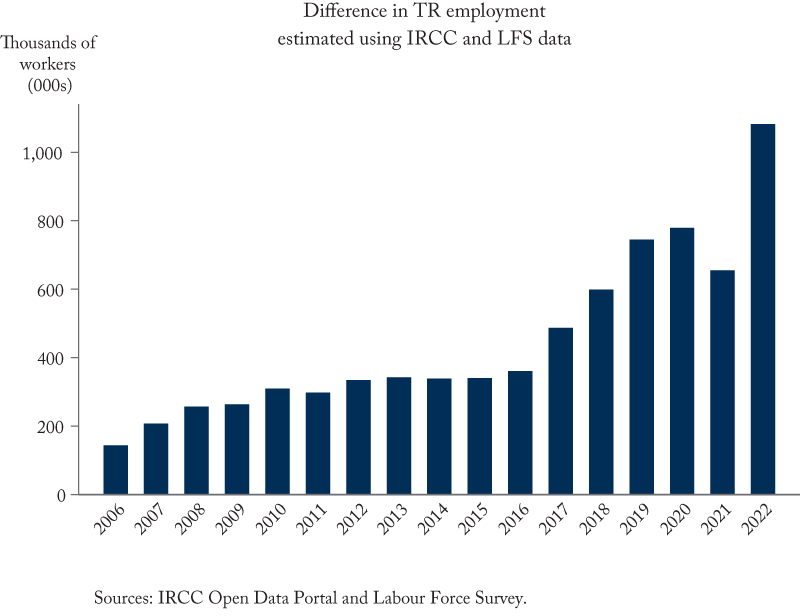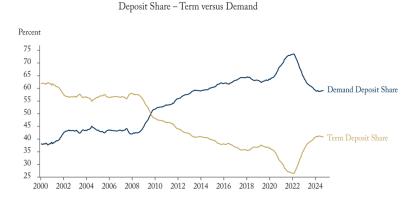The number of temporary residents (TR) working in Canada is growing; however, policymakers are in the dark due to a large difference in data estimates.
Information from Statistics Canada’s Labour Force Survey (LFS) and Immigration, Refugees and Citizenship Canada (IRCC) does not match up on the labour supply contribution of Canada’s TR population – workers, students and asylum claimants who have been authorized legally to enter Canada for temporary purposes through work permits, study visas or temporary resident visas.
Taking a deep dive into the LFS and IRCC’s data on this group’s employment over a 16-year-period, the former underestimates the number of those working, while the IRCC overestimates it.
In numbers, the LFS suggests that TR employment in Canada has increased from 111,479 in December 2006 to 503,079 in December 2022. Meanwhile, the IRCC data puts the 2022 number at 1,585,664, up from 255,260 in 2006. Comparing these data sources, this Graphic Intelligence shows the total difference in TR employment between these two data sources is a staggering 1,082,585 people for last year.
This difference highlights the need for higher quality information on the size and work activity of TRs in Canada – especially to understand the influence of this growing population on Canada’s labour markets. Read Fellow-In-Residence Mikal Skuterud’s new report for more on what needs to be done to address these missing workers.





